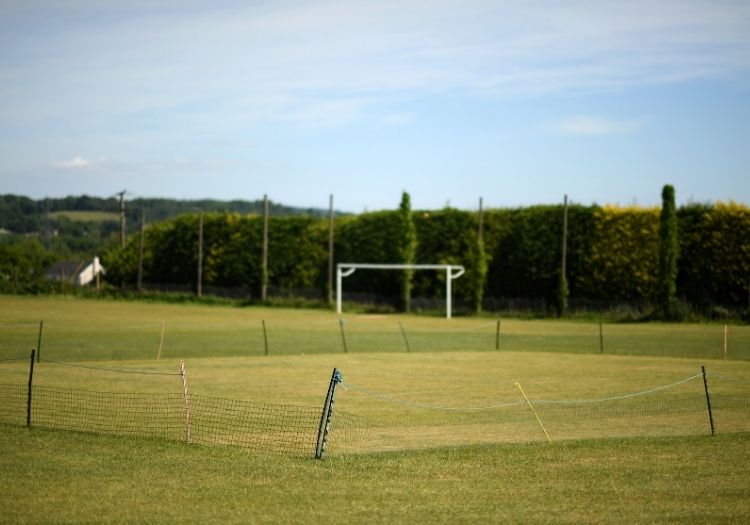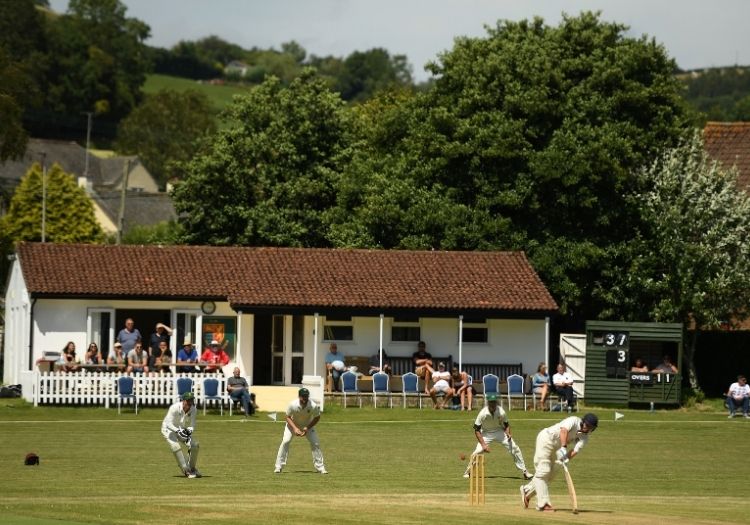JAMES COYNE: While there will be an unprecedented desire to get out to play cricket this spring, football may not make it easy for our clubs

There’s a powerful and profound argument to be made about prohibiting anonymous social media profiles. But in among all the bile and trolls there are a few accounts who provide a little harmless levity.
One of my favourites is @SecondXISkipper. It offers a semi-fictional outlet for all the familiar issues, complaints and selectorial injustices which fall at a club captain’s door in the week running up to a game on a Saturday or Sunday afternoon.
A sample of the kind of fare it deals in: “Text: ‘Twisted my ankle yesterday so in doubt for Saturday. Still hopeful. Will keep icing it and let you know.’
“Translation: ‘Have other arrangements but don't want to let on. Will pull out citing injury at last minute if not rained off’.”
And, from the 2020 half-summer: “Looks like a frustrating day waiting in cars for the rain to stop (still no changing rooms).
“The consolation is that it ruins the BBQs for the five (yes, five) players in the club who preferred that to cricket this week. Karma keeps me calm.”
We've all heard them. And we’ve heard them all.
Now, after two more national lockdowns which have forced people to generally stay indoors, the hope for the poor demoralised 2nd XI captains across the land is that a deep-seated yearning to get outside, play sport and socialise will overwhelm all the usual feeble excuses (and genuine excuses) for not turning out to play cricket.

Club cricket faces the challenge of dealing with an extended football season
The club game knows by now that there will be a full outdoor season. This is wonderful news. The on-field action will take place broadly under the same social distancing guidelines as were in place in the 2020 half-summer.
But it's not as if all club cricket's issues will suddenly disappear – far from it.
Anyone who goes into the running of a cricket club – especially when it involves bringing on young cricketers – has to brace themselves for plenty of reality checks.
I can think of three off the top of my head right now.
The first is weather. That’s pretty much out of your control, in fairness.
The second is exam season, which again very little can be done about.
The best that can be hoped for is that parents reach the balanced conclusion that running around playing sport, at a busy, intense time of their child’s life, is beneficial to them rather than damaging to their mental and physical fitness, and even helps them concentrate on studying when it comes down to it.
Exams at GCSE and A Level won’t be happening this year, which might in theory help availability for cricket among teenage cricketers. But coursework certainly is happening.
The other big reality is football. It really cannot be underestimated quite how powerful football’s grip on the nation’s psyche is, and the extent to which all other sports have to work around it.

Club cricket can resume from March 29, with restrictions
I remember vividly how, when I was 12, my youth football team decided to start running training on Friday evenings throughout the summer – placing themselves into direct competition with the local cricket club, who relied on Friday evenings to bring in much-needed colts subscriptions and bar income.
As it happened, because cricket was on its knees in this country in the late 1990s, hardly anyone else in my football team played cricket – not the other ones who went to state school, anyway – so it didn’t really affect anyone but me. And so when I pointed out this clash to my football coaches, there wasn’t much sympathy.
My impression is that this summertime conflict has not eased too much over the ensuing quarter of a century.
There are plenty of other challenges posed by football. Of course, these vary from area to area.
Cricket clubs are accustomed to patchy availability from dedicated season-ticket holders in the first few weeks of the season and then again from the start of August. The encroachment of the football season happened aeons ago, and it’s their choice to go and watch, of course.
The spectre of football’s postponed European Championships, which could yet be played in the UK in its entirety this summer, would add another potential complication.
And added to all that is the news that the Football Association will make up for lost time from March 29 by extending its recreational season until the end of June. Normally senior and junior football leagues would be finished by May. In many cases it seems the usual football league seasons will be abandoned and replaced by smaller cup competitions.
Cricket's route back to normality: The challenges facing the sport in 2021
Fair enough, to a degree, after seeing the football season ravaged by lockdowns. After so much inactivity, it’s sport, after all – and how could I be opposed to that?
Football’s extension could, though, pose a tricky challenge to younger cricketers in particular.
Sunday mornings are, in my region at least, when under-9 and under-11 age-group cricket is played, from the start of May up to the school holidays.
We play adult Sunday league cricket (as well as Saturday). Sundays are also the day for youth football.
Compromise should hopefully be possible in many cases. And if we’re worried about availability of shared recreation grounds, the pre-existing contracts to access pitches and facilities from May to the end of August should generally be held by cricket clubs.
But if football clubs decide to run training sessions on Friday evenings, in some places that will be in direct challenge to not just the usual colts cricket training, but the All Stars Cricket (age 5-8) pushed by the ECB as the entry-point for young boys and girls into cricket.
All Stars and Dynamos (age 8-11) begin to roll out across England and Wales from May 7, and the ECB will be waiting to monitor the uptake in a year that they will be knitting it all together with their big gamble of The Hundred.
There are other implications of the Covid-19 interruption.

The easing of restrictions means amateur cricket will be granted a full season
Indoor hospitality – by which we mean the bar – will not be permitted to open until May 17 at the earliest, which is in line with the rules on pubs in general. Though advocates of sobriety may not like it, the presence of the bar on a sunny evening is, in all honesty, one of the draws for parents when they come down to watch their little one in training. (At least outdoor provision of food and drink will be allowed from the start.)
Youth cricket is nothing without the coaches and volunteers who run it, and I’m told by one administrator in a county board that coaching courses have been all but halted for a year now, so the flow of incoming qualified cricket coaches has slowed.
There are also worries about coaxing back those kids who didn’t play cricket in the rearranged youth competitions in July and August last summer, and then didn’t do any indoor training over the winter. There are, after all, so many other attractions around.
209 centuries and counting: John Stuck has unfinished business at 77
And what about cricket at senior league level? It looks like there will be a battle for availability over the first few weeks of the season at least.
Though I am told many rearranged senior football leagues will in reality be done and dusted by the end of May, and some football clubs have had to hire out artificial grounds on which to play, there will be young men and women who excel in both football and cricket who will be forced to choose.
(As for rugby union, I’m told by the RFU that nothing really changes for senior and junior arrangements from a typical summer.)
So while the groundswell of enthusiasm to play cricket will hopefully grow over the next few weeks to a crescendo by mid-April, it’s also true that football will feel it has to make up for lost time.
But there’s no community game quite like cricket – and that counts for something.
Subscribe today and receive The Cricketer’s centenary issue – six issues for £19.21. Click here